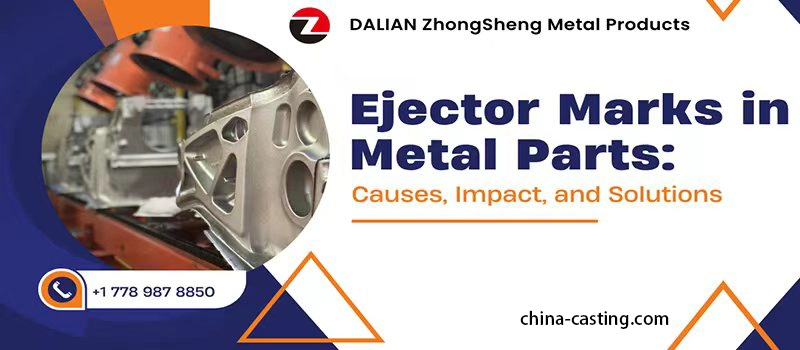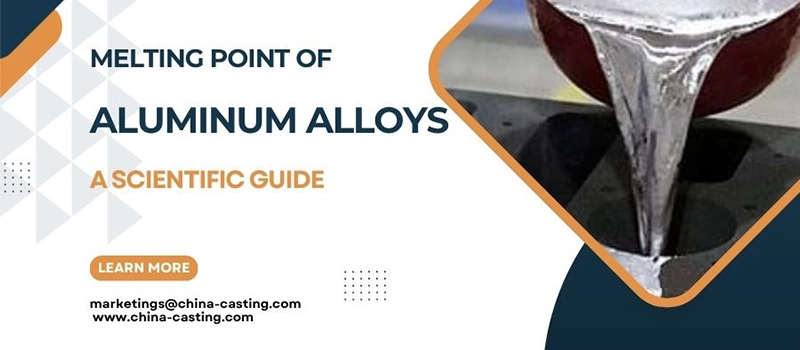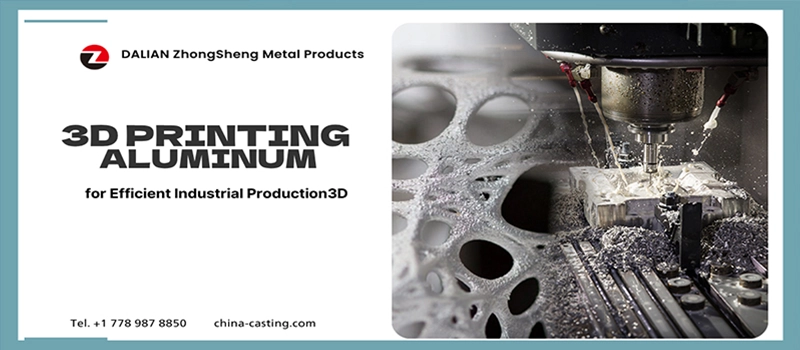Are you constantly battling the challenge of balancing strength, cost, and precision in your cast components? Have poor castability, shrinkage, or high tooling costs ever pushed your project off track? Or perhaps your current alloy fails under thermal stress, putting your delivery schedule at risk?
Aluminum Alloy A380 might be the solution you’ve overlooked.
Lightweight, structurally sound, and economically viable—A380 has become one of the most trusted aluminum alloys in the global die casting industry. From automotive housings to precision components in electronics, its widespread use is no coincidence. Engineers choose it not just for what it is, but for what it prevents: warping, cracking, and cost overruns.
What Is Aluminum Alloy A380?
Aluminum Alloy A380 is one of the most widely used materials in the die casting industry—and that’s no accident. It’s a pressure die casting alloy valued for its light weight, strength, and reliability in high-volume production.
When a customer asks me which aluminum alloy offers the best performance-to-cost ratio for complex cast components, my answer is almost always the same: A380.
It was developed to meet the demands of fast-paced manufacturing where consistency, efficiency, and performance matter more than anything else. From automotive engine housings to electronic enclosures and structural supports, A380 delivers dependable results where other alloys may fall short.
What makes it especially attractive to manufacturers is its versatility. It flows easily into detailed molds, making it ideal for producing thin walls and intricate shapes. At the same time, it maintains structural integrity under mechanical stress and thermal variation. This makes it suitable for industrial environments where parts must endure both force and heat.
A380 is also known for its good surface finish straight out of the mold. In many cases, this reduces the need for post-processing and machining—lowering your total production cost.
Another strength? It’s widely available, meaning easier sourcing, faster lead times, and lower risk of disruption. Whether you’re scaling up production or building a prototype, using a globally recognized alloy like A380 simplifies your supply chain.

In short, A380 isn’t just another aluminum—it’s a proven solution designed for real-world manufacturing.
Mechanical and Thermal Performance of Aluminum Alloy A380
When evaluating materials for industrial casting, performance isn’t just about strength—it’s about how well the alloy behaves throughout the entire production cycle. This is where Aluminum Alloy A380 consistently delivers.
Strong but Lightweight: A Balanced Alloy for Modern Design
A380 is strong enough to handle demanding structural applications but light enough to meet weight-sensitive design goals. That balance is exactly why it’s a favorite across industries like automotive, electronics, and construction.
Thermal Stability in Real-World Conditions
In terms of thermal performance, A380 holds up well under heat. Whether you’re casting engine housings or components exposed to frequent temperature shifts, this alloy offers reliable heat resistance and maintains its integrity over time. That’s critical when your final product needs to perform beyond the lab—in the field, under real stress.
Dimensional Accuracy and Fewer Reworks
Another reason engineers choose Aluminum Alloy A380 is its dimensional stability. Once cast, parts retain their shape with minimal distortion. That leads to:
- Fewer reworks
- More consistent part quality
- Less downstream stress on machining or assembly
Additional Benefits That Matter in Production
A380 also brings several additional performance advantages:
- ✅ Good corrosion resistance in most environments
- ✅ Satisfactory wear resistance for medium-load applications
- ✅ Smooth surface finish that accepts coatings, paint, or anodizing well
And let’s not forget the practical side: efficiency in high-speed die casting. A380 performs reliably in automated lines, retaining its properties even under pressure. That means faster cycles, fewer defects, and lower costs—the trifecta every production manager looks for.
Why Manufacturers Choose A380 Over Other Alloys
In industrial casting, not all aluminum alloys are created equal. When manufacturers choose Aluminum Alloy A380, it’s rarely a guess—it’s based on proven performance, cost-effectiveness, and repeatability in production.
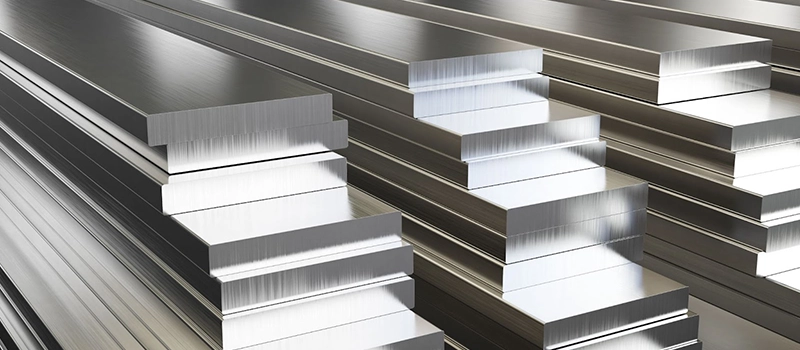
Exceptional Castability for Complex Designs
One of the biggest advantages of Aluminum Alloy A380 is its exceptional castability. It fills molds with ease, even in thin-walled or complex geometries. This reduces the risk of casting defects and scrap, translating into faster production cycles and less downtime—a key factor in high-volume manufacturing environments.
Lightweight Strength That Engineers Trust
Manufacturers also favor A380 alloy for its ideal strength-to-weight ratio. In industries like automotive, aerospace, and electronics, weight reduction is essential. A380 provides the necessary structural integrity without adding unnecessary mass—an advantage that supports both performance and energy efficiency.
Smooth Surface Finish and Easy Machinability
A380 typically produces castings with a clean surface finish straight out of the mold. This reduces the need for heavy machining, helping manufacturers save on labor and tooling costs. The alloy also accepts a wide range of surface treatments—including powder coating, painting, and anodizing—making it easier to meet aesthetic and functional requirements.
Cost-Efficiency Without Sacrificing Quality
Another major reason for choosing Aluminum Alloy A380 is its cost-efficiency. It’s widely available, competitively priced, and does not require specialized or high-cost processing equipment. Compared to premium-grade alloys, A380 delivers 90% of the performance at a fraction of the cost—a smart move for designs that don’t demand aerospace-level specs.
Reliable Sourcing and Supply Chain Stability
Because A380 alloy is globally standardized and commonly used, it offers logistical advantages. It’s easier to source, easier to substitute when needed, and more consistent in lead times. For OEMs and high-volume buyers, that translates into fewer production delays and better control over delivery schedules.
The Bottom Line: A Proven, Practical Choice
At the end of the day, manufacturers don’t choose Aluminum Alloy A380 just because it’s popular—they choose it because it works. It delivers what production teams, engineers, and procurement managers need: performance, reliability, and cost savings.
Industrial Applications of Aluminum Alloy A380
When it comes to industrial casting, few materials are as versatile and trusted as Aluminum Alloy A380. Its unique combination of lightweight strength, thermal resistance, and casting precision makes it the go-to choice for manufacturers across a wide range of industries.
Automotive Components That Demand Strength and Precision
In the automotive industry, A380 aluminum alloy is commonly used for parts such as:
- Engine brackets
- Transmission housings
- Oil pans
- Structural mounts
These components require more than just strength—they demand dimensional accuracy, low porosity, and thermal durability. Aluminum Alloy A380 delivers on all counts, making it one of the most widely used die casting aluminum alloys in the auto sector.
Electronics That Require Thermal Management and Clean Finishes
In electrical and electronics manufacturing, the A380 alloy is valued for its ability to dissipate heat efficiently. It’s used in:
- Heat sinks
- Motor housings
- Electronic enclosures
Its natural corrosion resistance and smooth surface finish make it suitable for exposed parts that require both functionality and appearance. It also takes coatings well, including paint and powder coating.
Heavy-Duty Use in Construction and Industrial Machinery
In construction and machinery, Aluminum Alloy A380 is the material of choice for:
- Structural supports
- Covers and housings
- Connectors and brackets
These components are often large and geometrically complex, but A380’s castability allows for easy mold filling and reduced post-processing. That leads to lower material waste, simplified tooling, and faster turnaround—all while maintaining part reliability.
Consumer Appliances That Need Durability and Weight Savings
In the world of consumer appliances, A380 is commonly used for both internal and external components. These include:
- Washing machine frames
- Power tool casings
- Compressor housings
Here, weight savings and long-term reliability are key. Aluminum Alloy A380 provides both without compromising structural strength—even under repeated mechanical stress.

A Unified Solution Across Industries
What ties all these applications together is a common need: a die casting aluminum alloy that’s reliable, efficient, and scalable. That’s where Aluminum Alloy A380 continues to outperform its competitors.
Its balanced material properties allow manufacturers to standardize casting processes, reduce design complexity, and streamline supply chain operations across global facilities.
If you’re sourcing or designing a part that must be produced in high volumes, maintain tight tolerances, and withstand moderate heat or stress, there’s a reason so many teams arrive at the same conclusion—
Aluminum Alloy A380 is the right answer.
Performance in Die Casting Process
When you’re working with tight deadlines and high production demands, the behavior of your material during the casting process can make or break the outcome. Aluminum Alloy A380 was engineered with this level of pressure in mind—making it one of the most dependable choices in modern die casting.
Exceptional Fluidity for Complex Mold Filling
One of the most praised features of the A380 alloy is its fluidity. In die casting, where molten metal is injected into intricate molds at high pressure and speed, fluidity determines whether thin walls, small ribs, and fine features can be filled without defects.
Aluminum Alloy A380 excels here. It flows efficiently into complex geometries, reducing the chance of cold shuts or incomplete filling. This is critical in industries like automotive and electronics, where precision is non-negotiable.
Predictable Shrinkage and High Dimensional Accuracy
Another major benefit is A380’s controlled shrinkage behavior. As it cools and solidifies, the alloy behaves predictably—minimizing the risks of internal voids, sink marks, and warping. That translates directly to:
- Tighter tolerances
- Lower rejection rates
- Less downstream rework
For production engineers, this kind of consistency is gold.
Thermal Stability and Extended Tool Life
Even under repetitive, high-temperature die casting cycles, Aluminum Alloy A380 maintains structural stability. It resists:
- Thermal cracking in molds
- Tool deformation
- Excessive die wear
This prolongs tool life and lowers maintenance costs, especially in large-scale operations where even small tooling failures can be expensive.
Ideal for High-Speed, Automated Production Lines
Aluminum Alloy A380 is also highly compatible with automated, high-speed die casting lines. Its process stability supports:
- Faster injection speeds
- Shorter cycle times
- High-volume throughput
That’s why A380 is often found in OEM supply chains, where millions of identical parts must be cast with precision and speed—without introducing unnecessary risk.
Minimal Finishing and Faster Time-to-Market
A380 often emerges from the mold with a uniform, smooth surface finish. This minimizes or even eliminates the need for:
- Grinding
- Polishing
- Extensive CNC machining
Less finishing means faster turnaround, lower tooling costs, and improved production efficiency.
Designed to Optimize the Entire Casting Cycle
From mold filling to final ejection, Aluminum Alloy A380 performs at every stage. It’s not just a casting material—it’s a production enabler. Its ability to support lean manufacturing while maintaining high quality is exactly why it continues to dominate the industrial die casting aluminum market.
Post-Casting Machining and Surface Treatments
After the casting process, the real work begins. Your part might have the right shape, but can it be machined with precision? Will it accept surface treatments without issue? This is where Aluminum Alloy A380 continues to prove its long-term value in industrial manufacturing.
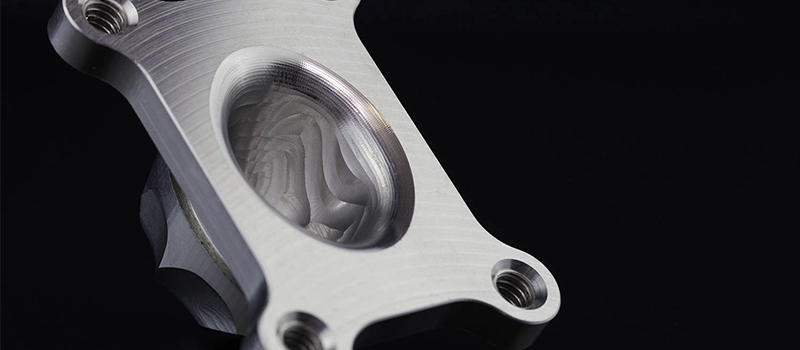
Consistent Machinability with Minimal Tool Wear
From a machining standpoint, A380 alloy is highly workable. It may not be the softest aluminum alloy, but it responds well to standard cutting tools. Whether you’re drilling, tapping, or trimming, A380 provides:
- Clean cuts
- Predictable results
- Low tool wear
Compared to harder die casting aluminum grades, it’s easier to machine and holds tight dimensional tolerances—a major advantage for components that require post-casting modification.
Faster Finishing Means Faster Production
Time saved on machining is time gained in production. That’s why Aluminum Alloy A380 is a game-changer for many manufacturers. Less time spent on finishing means:
- Higher throughput
- Lower labor costs
- Faster lead times
This efficiency helps increase your profit margins without compromising product quality.
Excellent Surface Finish and Treatment Compatibility
A380’s relatively smooth cast surface makes it ideal for a wide range of industrial surface treatments, including:
- Powder coating
- Anodizing
- Painting
The alloy accepts coatings reliably, with good adhesion and consistent visual results—even without extensive surface prep. For customer-facing or visible parts, that’s a major win.
Corrosion Resistance for Harsh Environments
In applications like construction machinery, outdoor enclosures, or automotive underbodies, surface protection is critical. Fortunately, Aluminum Alloy A380 can be further enhanced with protective coatings to improve its resistance to corrosion in tough environmental conditions.
Even in its raw form, A380 offers moderate corrosion resistance, making it suitable for many internal or protected applications where exposure is limited.
Reliable Integration with Automated Machining Lines
Another benefit of Aluminum Alloy A380 is its compatibility with automated machining systems. Its consistency across batches supports:
- Predictable tooling setup
- Shorter cycle times
- Streamlined quality control
That’s why many OEM suppliers standardize their secondary operations—like trimming, drilling, and finishing—around A380 die-cast parts. It’s just more reliable.
A Full-Cycle Solution for Modern Manufacturing
In short, Aluminum Alloy A380 doesn’t just cast well—it also machines, finishes, and assembles well. Its versatility and consistency make it a complete solution from start to finish, supporting a smoother, more profitable production workflow from tooling to delivery.
Common Issues and Solutions in A380 Casting
While Aluminum Alloy A380 is one of the most reliable and commonly used materials in die casting, no casting process is entirely free of challenges. Like any industrial alloy, A380 presents a few technical concerns—but with proper process control, most of these can be easily prevented or corrected.
Gas Porosity: Managing Internal Voids
A common concern in high-pressure die casting aluminum alloys like A380 is gas porosity. Trapped air or moisture in the molten metal can lead to tiny internal voids in the final part.
How to solve it:
- Maintain proper melt temperature
- Improve venting design
- Use degassed metal
In most cases, porosity in A380 castings is only cosmetic and doesn’t affect the part’s structural integrity.
Shrinkage: Predicting and Controlling Dimensional Changes
Like many aluminum alloys, Aluminum Alloy A380 contracts slightly as it cools. If not accounted for, this can cause dimensional distortion or surface sink marks.
How to solve it:
- Use uniform wall thickness
- Design effective gating and riser systems
- Control cooling rates precisely
Experienced foundries familiar with A380 alloy already factor these issues into mold design.
Hot Tearing: Avoiding Cracks in Complex Geometries
Hot tearing occurs when uneven solidification creates internal stress, especially in castings with sharp corners or restricted shapes. It’s a common issue with poorly optimized designs.
Why A380 is better:
Aluminum Alloy A380 is more resistant to hot tearing than many alloys. With proper casting parameters and stress-relieving part geometry, this risk is greatly reduced.
Inclusions: Preventing Oxides and Impurities
If oxide films, slag, or other impurities enter the mold, they can lead to weak points in the casting. This usually results from turbulent metal flow or poor melt quality.
How to solve it:
- Use clean, degassed melt
- Pour metal with minimal turbulence
- Apply ceramic filters in the runner system
Modern foundries working with A380 typically use these best practices as standard.
Die Sticking: Ejection and Lubrication Issues
Some A380 castings—especially those with large surface areas or thin walls—may stick to the mold, making ejection difficult.
Solution:
- Apply proper die coatings and lubricants
- Use release agents designed for aluminum alloys
- Ensure consistent die surface temperature
Luckily, A380 responds well to most commercial release systems, making die sticking easy to control.
Casting Parameter Adjustments: Switching to A380 Alloy
If you’re switching from another alloy to Aluminum Alloy A380, it’s essential to adjust your process settings. A380 has unique flow and solidification characteristics.
Key parameters to tune:
- Injection speed
- Holding pressure
- Die temperature
Without proper adjustment, even a good alloy like A380 can yield inconsistent results. But once dialed in, it becomes one of the most forgiving and stable die casting aluminum alloys available.
Process Control Is the Real Key
In most cases, casting issues with Aluminum Alloy A380 are not caused by the alloy itself—they’re caused by insufficient process control. With the right setup, tooling, and operator expertise, these issues can be avoided entirely.
That’s what makes A380 alloy so widely trusted: it’s dependable, adaptable, and cost-effective, even in challenging production environments.
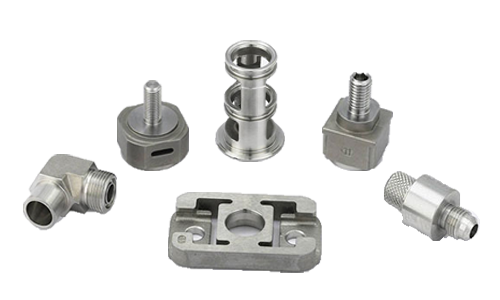
Get a quote now!
Future Trends in Aluminum Die Casting with A380 Alloy
As industrial casting evolves, so do the demands placed on materials and processes. Manufacturers worldwide are rethinking how they design, produce, and scale products. And right in the center of that conversation is Aluminum Alloy A380.
Why? Because A380 isn’t just a reliable material for today—it’s also adaptable enough to support the future of casting.
♻️ Sustainability and Aluminum Alloy A380
With sustainability becoming a global priority, Aluminum Alloy A380 offers clear environmental advantages. Aluminum is infinitely recyclable, and A380 castings are often made from high-recycled-content ingots without sacrificing quality. This aligns with stricter environmental regulations and the increasing push for greener supply chains.
What makes A380 alloy particularly suitable for sustainable production is its energy efficiency during casting. Due to its high fluidity, it requires less energy input to fill molds completely, reducing overall cycle times and cutting CO₂ emissions per part.
Forward-thinking OEMs are already factoring this into their ESG (Environmental, Social, Governance) reporting—especially in the automotive, construction, and electronics sectors.
🚗 A380 Alloy and the Shift to Electric Vehicles
The rise of electric vehicles (EVs) is transforming the materials landscape. EVs demand components that are both lightweight and structurally sound—two areas where Aluminum Alloy A380 excels.
Battery enclosures, motor housings, cooling systems, and lightweight structural parts are increasingly being cast with A380 due to its favorable strength-to-weight ratio and thermal performance.
Moreover, the ability to die cast A380 parts with minimal post-processing supports the lean, fast-moving manufacturing models of today’s EV factories.
As OEMs transition from traditional ICE (internal combustion engine) platforms to EV platforms, the role of A380 aluminum in lightweighting strategies is only going to grow.
🤖 Industry 4.0, Automation, and Die Casting with A380
Another major trend is Industry 4.0—a shift toward smart factories, automation, and digitally connected production lines. Aluminum Alloy A380 is well suited to automated casting systems, thanks to its predictable behavior, low defect rates, and compatibility with robotic machining and finishing lines.
Manufacturers are integrating real-time quality inspection, AI-driven process controls, and IoT-enabled sensors into their die casting cells. A380’s stability under high-speed casting conditions makes it an ideal match for these advanced systems.
So whether it’s about sustainability, mobility, or automation, Aluminum Alloy A380 continues to evolve with the industry. It’s not just a legacy material—it’s a future-proof solution.
Conclusion
In the world of industrial casting, Aluminum Alloy A380 continues to lead for a reason. It offers the rare balance of castability, mechanical performance, surface finish, and cost efficiency—all within a material that’s globally available and widely trusted.
From automotive and electronics to construction and machinery, A380 has proven its value across industries, production volumes, and evolving design demands. Whether you’re scaling up manufacturing, optimizing costs, or transitioning to more sustainable materials, A380 alloy provides the flexibility and reliability you need to move forward with confidence.
Choosing Aluminum Alloy A380 isn’t just a material decision—it’s a long-term strategy.


